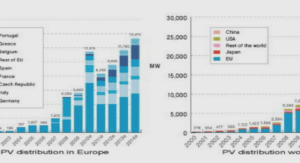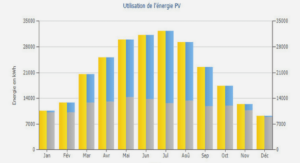A hybridized mixed approach for efficient stress prediction in a layerwise plate model
Ce chapitre vise à exploiter la méthode d’hybridation mixte pour le modèle SCLS1. On présente tout d’abord la méthode hybride mixte pour le modèle 3D. Puis on passe à la méthode d’hybridation mixte pour le modèle SCLS1. A la fin, on présente les résultats illustartifs de cette méthode. Les résultats de ce chapitre ont fait l’objet d’un article soumis dans un journal scientifique.Building upon recent works devoted to the development of a stress-based layerwise mo- del for multilayered plates, we explore an alternative finite-element discretization to the conventional displacement-based finite-element method. We rely on a mixed finite-element approach where both stresses and displacements are interpolated. Since conforming stress- based finite-elements ensuring traction continuity are difficult to construct, we consider a hybridization strategy in which traction continuity is relaxed by the introduction of an additional displacement-like Lagrange multiplier defined on the element facets. Such a strategy offers the advantage of uncoupling many degrees of freedom so that static condensation can be performed at the element level, yielding a much smaller final system to solve. Illustrative applications demonstrate that the proposed mixed approach is free from any shear-locking in the thin plate limit and is more accurate than a displacement approach for the same number of degrees of freedom. As a result, this method can be used to capture efficiently strong intra- and inter-laminar stress variations near free-edges or cracks.Multilayered plates are important in structural engineering and are widely studied by engineers during the 20th century with applications ranging from aerospace engineering to civil engineering. The materials in each layer can be either homogeneous and isotropic or heterogeneous and anisotropic (e.g. fiber-reinforced composites). The difficulty in stu- dying such structures comes from the strong variations of mechanical properties between each ply, especially when using anisotropic materials. One of the major issues in design and analysis of such multilayered plates is related to free-edge effects. In fact, near free edges there are highly concentrated interlaminar stresses (Ting and Chou (1981); Wang and Choi (1982); Leguillon (1999); Chue and Liu (2002); Mittelsteda and Becker (2005)). Such stress concentrations are important to account for since they are at the origin of interlayer delamination and failure of the laminate. Many models have been derived to properly describe such free-edges effects. Highly detailed three-dimensional (3D) finite- element models are expensive and will result in accurate stress predictions only for suf- ficiently refined meshes since they rely on displacement interpolations.
Two-dimensional plates models attempts at simplifying these computations while trying to keep a suffi- ciently correct description of local 3D stress fields.Many equivalent single layer (ESL) models that represent the laminate as an equiva- lent homogeneous plate are proposed in literature and are based on higher order theories (Whitney (1973); Reddy (1984); Cho and Parmerter (1993); Cecchi and Sab (2007); Lebée and Sab (2011a,b, 2012); Swaminathan and Ragounadin (2004); Vidal and Polit (2008, 2011)). Although ESL models can provide acceptable results for the laminate global res- ponse, they may lead to very inaccurate estimations of local response especially near free-edges.Conversely, layerwise models, in which each layer is considered as an independent plate, have therefore been proposed to improve the local stress representation (Barbero and J.N. (1991); Robbins and Reddy (1993); Gaudenzi et al. (1995); Moorthya and Reddy (1998); S.Botello et al. (1999); Carrera (1998)). They have been proved to be a very good alternative to 3D models when using proper interpolation along the thickness direction to take into account the laminate material distribution. The interested reader can refer to (Carrera (2002, 2004); Zhang and Yang (2009)) for a general overview on such models.Following Pagano’s model (Pagano and Pipes (1970)), a layerwise model named LS1 was developed in (Chabot (1997); Carreria et al. (2002); Diaz et al. (2002); Lerpiniere et al. (2014); Nguyen and Caron (2006); Saeedi et al. (2012a,b, 2013a,b)). In this model, the laminate is considered as a superposition of Reissner-Mindlin plates linked together by interfacial stresses which are considered as additional generalized stresses. A layerwise model called statically compatible (SCLS1), has been later introduced in (Baroud et al. (2016)) in order to generalize the LS1 model by a purely statically compatible construc- tion. Doing so, the SCLS1 model produces a 3D stress field satisfying the local 3D balance equations and boundary conditions provided that their 2D plate counterparts are satis- fied. Moreover, this model is derived by means of the minimum of the complementary potential energy ensuring the convergence of its refined version to the exact 3D model, as the number of mathematical layers per physical layer increases.




